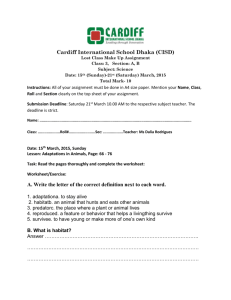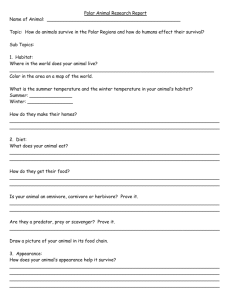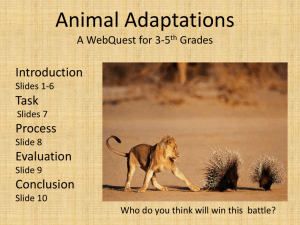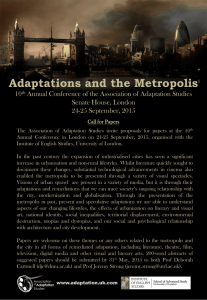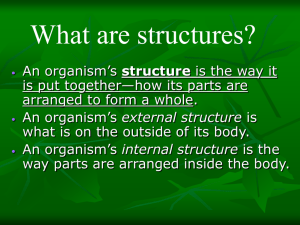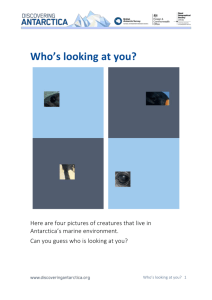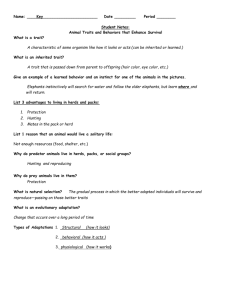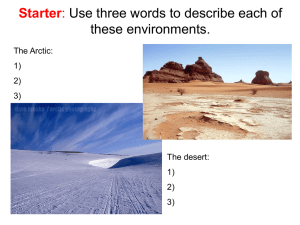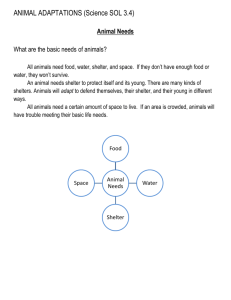Name Date ______ Period ______ Lab: Build-a
advertisement
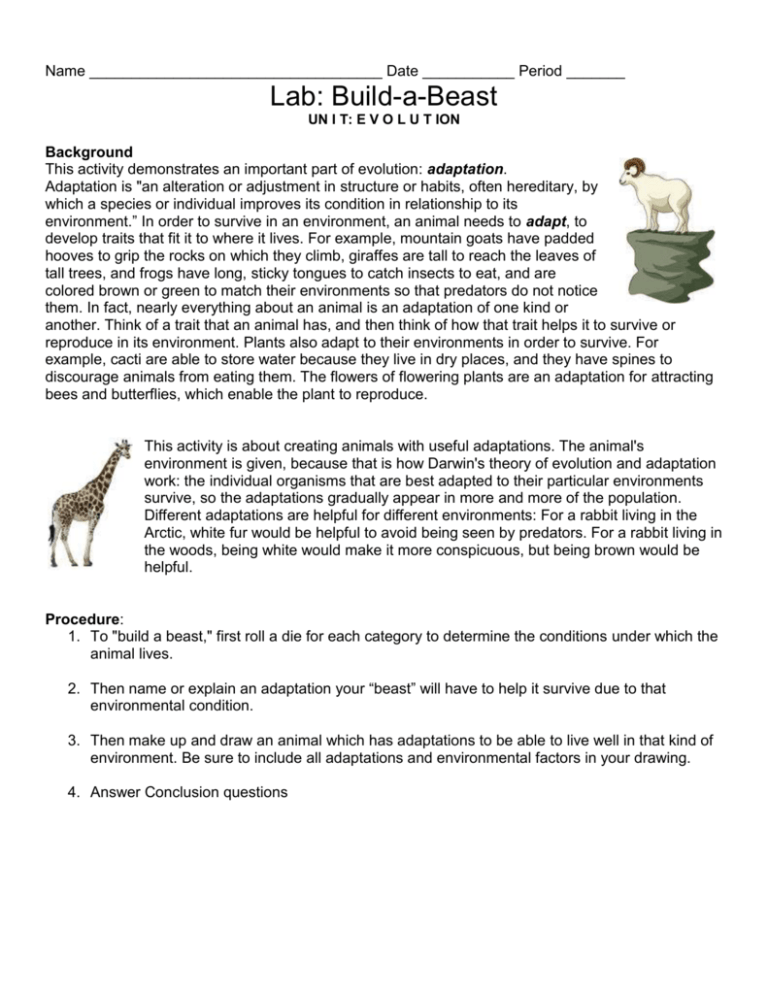
Name ___________________________________ Date ___________ Period _______ Lab: Build-a-Beast UN I T: E V O L U T ION Background This activity demonstrates an important part of evolution: adaptation. Adaptation is "an alteration or adjustment in structure or habits, often hereditary, by which a species or individual improves its condition in relationship to its environment.” In order to survive in an environment, an animal needs to adapt, to develop traits that fit it to where it lives. For example, mountain goats have padded hooves to grip the rocks on which they climb, giraffes are tall to reach the leaves of tall trees, and frogs have long, sticky tongues to catch insects to eat, and are colored brown or green to match their environments so that predators do not notice them. In fact, nearly everything about an animal is an adaptation of one kind or another. Think of a trait that an animal has, and then think of how that trait helps it to survive or reproduce in its environment. Plants also adapt to their environments in order to survive. For example, cacti are able to store water because they live in dry places, and they have spines to discourage animals from eating them. The flowers of flowering plants are an adaptation for attracting bees and butterflies, which enable the plant to reproduce. This activity is about creating animals with useful adaptations. The animal's environment is given, because that is how Darwin's theory of evolution and adaptation work: the individual organisms that are best adapted to their particular environments survive, so the adaptations gradually appear in more and more of the population. Different adaptations are helpful for different environments: For a rabbit living in the Arctic, white fur would be helpful to avoid being seen by predators. For a rabbit living in the woods, being white would make it more conspicuous, but being brown would be helpful. Procedure: 1. To "build a beast," first roll a die for each category to determine the conditions under which the animal lives. 2. Then name or explain an adaptation your “beast” will have to help it survive due to that environmental condition. 3. Then make up and draw an animal which has adaptations to be able to live well in that kind of environment. Be sure to include all adaptations and environmental factors in your drawing. 4. Answer Conclusion questions Roll the dice and circle the corresponding environmental factor for each question below. A) WHERE DOES IT LIVE? 1 - mountains 2 - flat terrain 3 - rocky, harsh 4 - wetland 5 - near a volcano 6 - in a cave B) HOW MUCH FRESH WATER IS THERE? 1 & 2 - almost none; dry and barren 3 & 4 - water part of the year, drought the rest 5 & 6 - lots of rain all year C) WHAT IS THE CLIMATE/WEATHER LIKE? 1 - hot and windy 2 - hot all year 3 - moderate 4 - cold and windy 5 - all four seasons 6 - sub-zero temperatures D) HOW MUCH AVAILABLE DAY LIGHT? 1 & 2 - long days, short nights 3 & 4 - short days, long nights 5 & 6 - even days and nights E) WHAT DOES IT EAT? 1 - leaves from tall plants 2 - fungus growing under rocks 3 - berries, plants, and small animals 4 - water animals 5 - swift running deer-like animals 6 - flying insects F) WHAT EATS IT? 1 - stompsuckers squash it flat 2 - vampire butterflies land on it and suck it dry 3 - buzzbugs lay eggs that burrow into its skin 4 - web devils set gooey traps to catch it 5 - ratrax packs are wolf-like and chase it 6 - megaworms leap out of the sand and swallow it Lab: Build-a-Beast UN I T : E V O L U T ION Draw your “beast” showing all the adaptations and environmental conditions. Environmental Factor Where does it live? How much water is there? What is the climate/weather like? What does it eat? What eats it? Answer from rolling dice Adaptation (physical trait) Conclusion: (Use complete sentences to answer) use pages 297-301 1. Define adaptation. _______________________________________________________________________ _______________________________________________________________________ 2. Define natural selection. _______________________________________________________________________ ______________________________________________________________________ 3. What does the term fitness mean in regards to natural selection? _______________________________________________________________________ _______________________________________________________________________ 4. What does it mean to become extinct? _______________________________________________________________________ _______________________________________________________________________ 5. Which of the adaptations for your organism do you think were the most important for survival? Explain why. _______________________________________________________________________ _______________________________________________________________________ 6. The least important? Explain why. _______________________________________________________________________ _______________________________________________________________________ _______________________________________________________________________ 7. Name at least two changes in the environment that you think may cause your organism to become extinct. _______________________________________________________________________ _______________________________________________________________________ 8. What single change in the environment do you think would affect your organism the most? _______________________________________________________________________ _______________________________________________________________________

